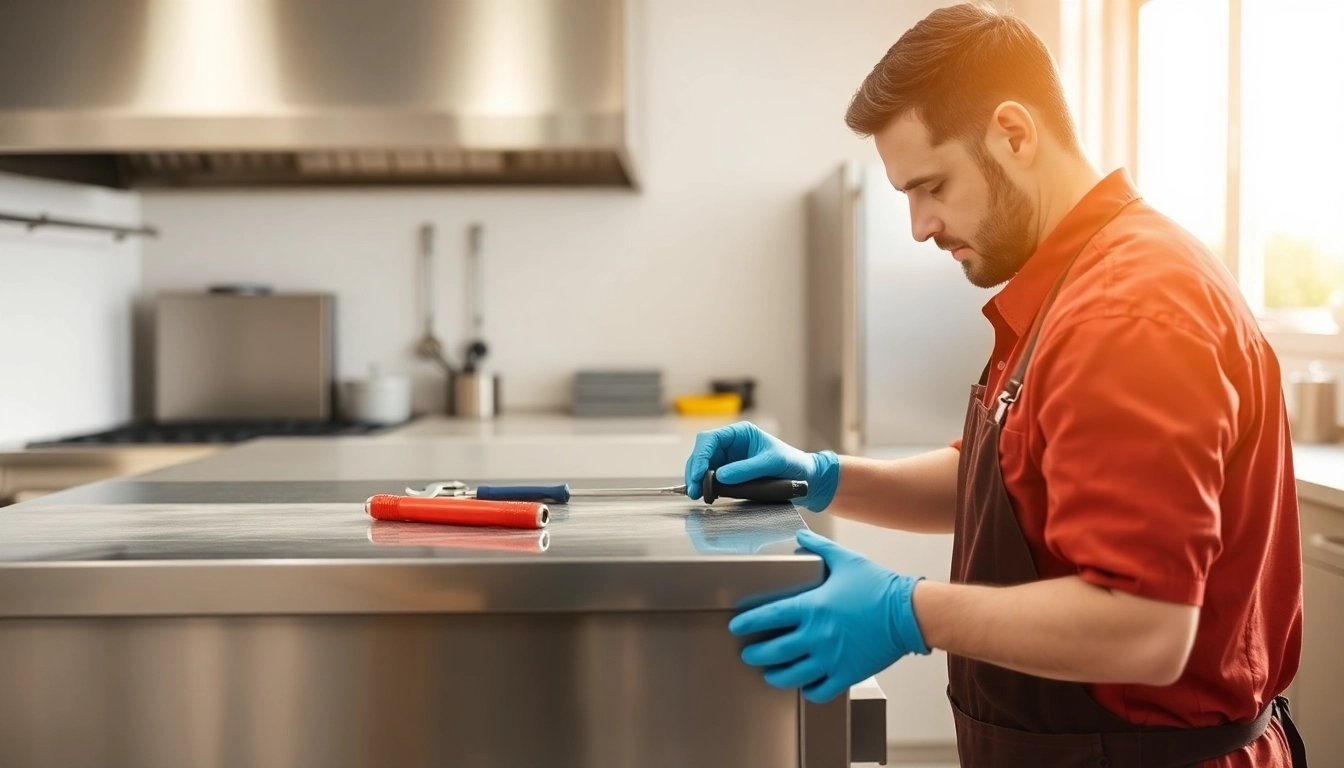Comprehensive Guide to Effective Prep Table Repair for Commercial Kitchens

Understanding Prep Table Repair Basics
In any commercial kitchen, the prep table is an essential component that aids in the efficient preparation of food. However, due to frequent use and the demands placed on it, problems can arise that may require repair or upkeep. Understanding prep table repair is crucial for maintaining the functionality and longevity of this vital equipment. This comprehensive guide aims to provide detailed insights into prep table repairs, covering everything from identifying common issues to executing effective maintenance strategies.
What is a Prep Table?
A prep table, often referred to as a food prep table, is a multi-functional workstation predominantly found in commercial kitchens. It serves as a dedicated surface for chefs and food handlers to chop, mix, and prepare ingredients before cooking or service. Typically constructed with stainless steel, prep tables come in various styles, including refrigerated options, which maintain a cold temperature for ingredient preservation.
The significance of prep tables extends beyond just functionality; they play a crucial role in ensuring hygienic practices in food handling. Therefore, understanding how to repair and maintain them is integral for any establishment in the food service industry.
Common Issues Leading to Prep Table Repairs
Despite their sturdy construction, prep tables are not immune to wear and tear. Here are some of the most prevalent issues that can necessitate repairs:
- Thermostat Malfunctions: Problems with the thermostat can result in inadequate temperature regulation, affecting food safety and quality.
- Poor Door Sealing: If the seals on refrigerator prep tables wear out, cold air can escape, leading to inefficient cooling.
- Electrical Failures: Issues with the wiring or electrical components can hinder the operation of refrigerated models.
- Physical Damage: Denting or scratching of surfaces due to mishandling can compromise hygiene and aesthetics.
Key Components of a Prep Table
Understanding the key components of a prep table is essential when diagnosing and repairing issues. Here are some integral parts:
- Tabletop: The main surface used for food preparation.
- Refrigeration Unit: Keeps ingredients cold and is critical in refrigerated prep tables.
- Doors and Drawers: Enclosures for storing ingredients, sealing properties are vital for temperature maintenance.
- Cooling Fans: Circulate air to regulate temperature inside the refrigerated unit.
- Thermostat: Controls the internal temperature and signals the compressor to start or stop.
Identifying Signs of Damage in Your Prep Table
Regular inspection of your prep table can help catch issues before they escalate into significant repairs. Here’s what to look out for:
Symptoms of Electrical Failures
Electrical failures are often evident through signs such as flickering lights, unusual noises from the unit, or failure to cool properly. Always start by checking the power supply and ensuring all connections are secure. If problems persist, consider consulting a professional as working with electrical components can be hazardous.
Recognizing Temperature Control Issues
One of the most critical functions of a prep table is maintaining the correct temperature. Signs that indicate potential temperature control issues include:
- Food not remaining cold or frozen.
- Frost buildup inside the refrigerator.
- Inconsistent temperatures when checked over time.
These signs can indicate malfunctioning thermometers or faulty wiring that may require professional assistance.
Detecting Physical Wear and Tear
Visible wear and tear is a clear indicator of the need for repairs. Look for:
- Surface scratches or dents that can harbor bacteria.
- Loose or damaged door hinges which can affect sealing capabilities.
- Rust or moisture build-up in areas that should remain dry.
Addressing these physical issues in a timely manner can prevent more significant problems down the line.
Step-by-Step Guide to Repairing Your Prep Table
For those willing to tackle repairs themselves, a systematic approach can alleviate some typical issues. Here’s a detailed guide:
Gathering Necessary Tools and Materials
Before starting any repair job, gather the necessary tools. This often includes:
- Screwdrivers (Phillips and flathead)
- Multimeter for electrical testing
- Cleaning supplies (detergents, cloths, sanitizer)
- Replacement parts (seals, thermostats, etc.) if available
Ensure you keep safety gear, such as gloves and goggles, on hand to prevent injuries.
Performing Basic Electrical Checks
Start by unplugging the prep table. With a multimeter, check the continuity of the electrical components:
- Test the socket using the multimeter to ensure it has power.
- Check individual components such as the fan motor and compressor for issues.
Replace any faulty components carefully or consult with a certified technician for more complex issues.
Cleaning and Maintaining Interior Components
Regular cleaning enhances the performance of the prep table and can prevent future issues:
- Remove food debris from the table and shelving.
- Check the condensation drain for blockages and clear them.
- Clean the evaporator fan and coils to ensure they operate efficiently.
- Inspect and clean the door seals; replace them if they are worn out.
These maintenance tasks prolong the life of your prep table and prevent common problems.
When to Call a Professional for Prep Table Repair
While some repairs can be managed independently, particular situations demand professional expertise. Understanding when to call an expert is vital for timely and effective repairs.
Identifying Problems Beyond DIY Fixes
Certain issues should alert you to the need for professional service:
- Complex electrical issues that you cannot resolve safely.
- Persistent temperature problems despite cleaning and checking components.
- Significant refrigerant leaks or broken mechanical parts that could impact safety.
Choosing a Reliable Prep Table Repair Service
Finding a trustworthy repair service is essential for maintaining your prep table. Look for:
- Credentials and certifications of service technicians.
- Positive customer reviews and testimonials.
- A warranty on repairs and parts provided.
Ask for references and ensure they have experience with the specific brand and model of your prep table.
Understanding Repair Costs and Quotes
Repair costs can vary widely depending on the complexity of the problem:
- Simple electrical repairs may cost less than $100.
- Significant mechanical repairs involving parts replacement can reach upwards of $500.
Always request a detailed written quote before work begins and understand what is covered in the price.
Best Practices for Maintaining Your Prep Table
Regular upkeep can not only extend the life of your prep tables but also boost food safety in your commercial kitchen. Implement these best practices:
Regular Cleaning and Inspection Routines
Schedule weekly cleaning sessions, including:
- Removal of all food products to clean surfaces thoroughly.
- Disinfecting all areas before restocking.
- Inspecting seals and other parts to identify issues early.
These practices will help preserve the integrity of your prep table and sustain hygienic work environments.
Implementing Preventive Maintenance Strategies
Preventive maintenance is key to avoiding major repairs. Make a habit of:
- Conducting monthly preventative checks on electrical components.
- Scheduling a professional inspection annually.
- Keeping a maintenance log for tracking repairs and service dates.
Keeping Records of Repairs and Services
Maintaining detailed records of all repairs and services can provide insight into the longevity of specific components and service needs over time. This practice assists in budgeting for future repairs and ensures that your prep table remains operational for the long haul.





